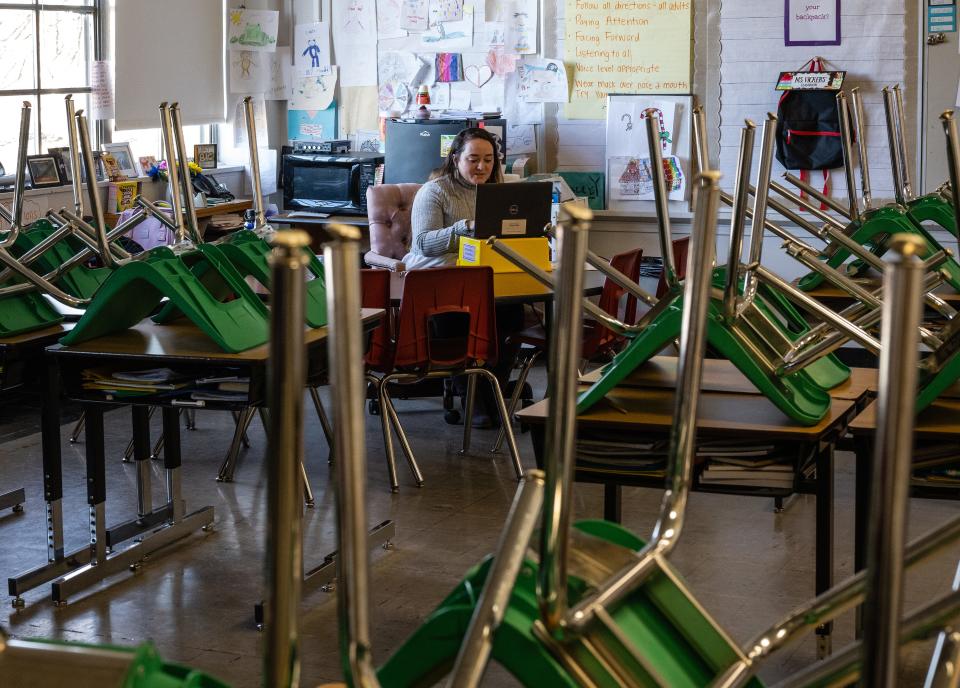Half of nation's students fell behind a year during COVID-19 pandemic. How do we recover?
Half of the nation's students began this school year a full year behind grade level in at least one subject because of COVID-19 pandemic disruptions, new national data from the federal Education Department shows.
It's as if students are doing the 2021-22 school year all over again.
"We're seeing that they're starting the school year off about the same as they were last year," Rachel Hansen, a statistician for the National Center for Education Statistics, said Tuesday. "And I think overall, it means that we've got a long road ahead of us in trying to get kids to get back to grade level."
Before the pandemic, about 36% of students started a typical school year that far behind, Hansen said. Federal officials want schools nationwide to roll back the increase – and then some.
COVID-19 closed schools across the world, but the new survey data suggests many of America's students fared worse than students in several other countries. An international study of 15 countries shows students across the world fell behind by about a third of a year on average, according to research published in the journal Nature Human Behaviour.

Students lost months of learning because of COVID-closures: What can parents do to help?
How are schools helping students recover?
Fifty-nine percent of the 1,026 public school principals surveyed said their schools are using some form of "tailored accelerated instruction" to combat the setbacks, especially in core reading and math, new data from the Education Department's School Pulse Panel shows.
K-12 schools are experimenting with myriad strategies – from social-emotional learning to high-dosage tutoring to individualized learning – to catch kids up.
Even with all of those interventions, however, students may have a long way to go.
"These data suggest that academic recovery will take time," National Center for Education Statistics Commissioner Peggy G. Carr said.
Could this strategy be the solution? US students lost decades of progress in math, reading.
Are disruptions over?
Although the height of pandemic-related school closures is over, natural and human-caused disasters continue to disrupt instruction time.
Schools in Jackson, Mississippi, are grappling with a water infrastructure crisis that has shuttered schools for days at a time this school year. California schools are recovering from a series of storms this winter that shuttered some schools and destroyed school property. Schools in Puerto Rico are still dealing with the damage from Hurricane Fiona, which left thousands of students in the hardest-hit regions of the island without electricity, water, internet access and essential services. And a lack of air conditioning on hot days has shuttered schools across the country.
More on pandemic-learning loss
Reading and math test scores fell across the U.S. during the pandemic: How did your state fare?
How much is enough to make up for lost time? COVID-19 pandemic aid more than $300 billion short for dealing with student learning loss, study shows
Some schools are shifting to four-day weeks: Here's what you need to know
Contact Kayla Jimenez at kjimenez@usatoday.com. Follow her on Twitter at @kaylajjimenez.
This article originally appeared on USA TODAY: K-12 students lost a year of learning during COVID-19 pandemic

